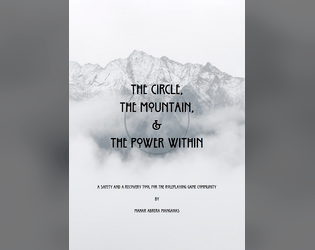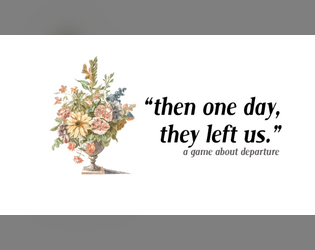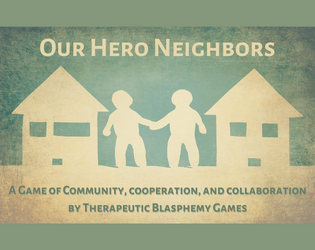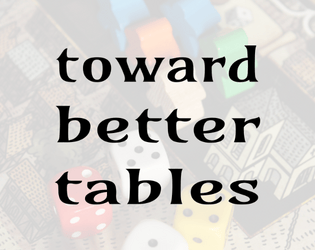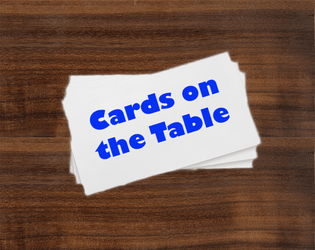This jam is now over. It ran from 2019-09-20 04:00:00 to 2019-11-08 05:00:00. View 5 entries
The point of TTRPGs is to have fun.
That rule seems simple enough in theory, but it becomes complicated by the fact that everyone has a different definition of what fun is. Even in a group that agrees upon what is fun for them and works towards the same goal (whether that be puzzle solving, tactical combat, storytelling, goofing around with friends for four hours, or a mix of all the above), there will always be areas of disagreement or clash that eventually rise up.
To ensure that everyone is always comfortable and having as much fun within the group as possible, communication and consent are key. Making sure to check in with yourself and the other players about what everyone wants and if they're cool with what's happening is crucial to having a good table experience. But that can be hard to do for a bunch of reasons, so it can be useful to have tools to help out with that.
TTRPG Safety tools exist to do just that; they're designed as a way to help facilitate those conversations around the table to ensure everyon'e comfort, safety, and enjoyment. But they don't always work that way, and not every safety tool works for every game, group, or situation. There's also a lot of barriers to introducing certain tools to the table based on culture and accessibility.
Luckily, a variety of tools have been made so there usually exists one that works for your situation. And some games have even started building safety tools into the mechanics, weaving check-ins and communication into the core of the game as to make it a natural part of the play process rather than just an add-on. And that's awesome!
The point of this jam is to support that trend, and encourage folks to create both new safety tools AND games that weave safety tools into their core mechanics in unique and interesting ways. Consent at the table is important, and by making it more intrinsic to the culture we can make a more welcoming environment for everyone.
The Rules:
There are three main categories for submissions:
1) New Safety Tool
This category is pretty straight forward. Any new or original standalone safety tool, whether in the design stage of forming a game, or straight to the table, is a valid submission to this category.
2) Reference Material
This category is for any reference material or guide which assists players and/ or designers in creating, using, and integrating new and existing tools into their games. Whether it compiles existing safety tools, presents information on how or why to use and integrate them, or otherwise sheds a light on the purpose of safety tools, it fits into this category.
3) Game Incorporating a Safety Tool
This category is for any game that incorporates a safety tool in a unique and innovative way. This is specifically about games that have new safety tools specifically developed for them, or incorporate a new or existing safety tool into the framework of the game. Having a passage explaining an existing tool like the X-Card, Script Change, or Support Flower is a great thing to include in most games, and we encourage you to do it in all your games, but this category is meant to encourage pushing beyond just the basic steps into innovative design.
4) Other
This category is intentionally vague, but if you come up with a game or product that encourages and supports the use of safety tools in a way that alligns with the spirit of this Jam, but doesn't fit into the other categories, by all means, submit it anyways with a little description of what it is. We don't want to stifle creativity!
Our Principles:
#SafetyJam adheres to the 9 principles of the *DREAM movement. These are:
- *DREAM stands against hate & prejudice in all forms. We seek to actively oppose bigotry & harassment in gaming communities.
- *DREAM works to be radically inclusive. We seek to support and encourage creators, GMs, players, and organizers from marginalized groups. And we seek to get better at this all the time.
- *DREAM encourages the use of sensible tools for communication and consent.
- *DREAM opposes harassment and strives for non-toxic discourse. We assume best intentions, we call in before calling out, and we start discussions before we make accusations. But if best intentions aren't present, we will call out.
- *DREAM values creators & their work. We support equitable pay for professional creators and fair treatment for hobbyists.
- *DREAM values a DIY approach to creation. We question gatekeeping, we take alternative approaches when traditional publishing models fail, and we believe anyone can make great games.
- *DREAM values experimentation in game design & worldbuilding.
- *DREAM isn't defined by, but is interested in: anti-canons, emergent story, generative worlds, kitbashing, non-violent play options, and more. And it's fine if some of these things contradict each other!
- There is no one *DREAM . Anyone who commits to these principles is *DREAMing.
This jam specifically has an interest in principles 1-4, and seeks to promote those as best as we can. To highlight points 1 and 2, this jam has a 0 tolerance policy for hate, bigotry, and discrimination of any kind. Safety tools are meant to create a safe environment with which to interact with sensitive topics, and it may be fit to include mentions of them in your writing. Doing so must be done with the utmost care and respect, and with the complete understanding that engaging on those behaviors is harmful and is against our values.
If any of the hosts feel like a submission or the designer behind it is in violation of the rules of this jam or of the principles above, we will remove the submission from the game jam.
Existing Reference Materials:
The following are some toolkits and safety tool materials you can reference for your own design:
The TTRPG Safety Toolkit
The TTRPG Safety Toolkit is a resource created by Kienna Shaw and Lauren Bryant-Monk. The TTRPG Safety Toolkit is a compilation of safety tools that have been designed by members of the tabletop roleplaying games community for use by players and GMs at the table. You can find it at bit.ly/ttrpgsafetytoolkit.
This is a great reference that compiles many existing safety tools, explains their purposes, uses, and provides references to the original sources and creators.
Consent in Gaming
The Consent in Gaming guide written by Sean K. Reynolds and Shanna Germain that dives into similar topics as the above, as well as going deep into different rules and mindsets to have when implementing safety tools or bringing them to a new table. Check it out here: https://www.montecookgames.com/consent-in-gaming/
Last Words!
SAFETY JAM RUNS ALL THE WAY UNTIL NOVEMBER 8, 2019. Plenty of time to drop your submissions and spread the word! If you want to see what other people have been talking about for this game jam, check out the #SafetyJam hashtag on Twitter. Also, feel free to DM either Amr or Pammu if you have questions or concerns!
Submissions(5)
No submissions match your filter


